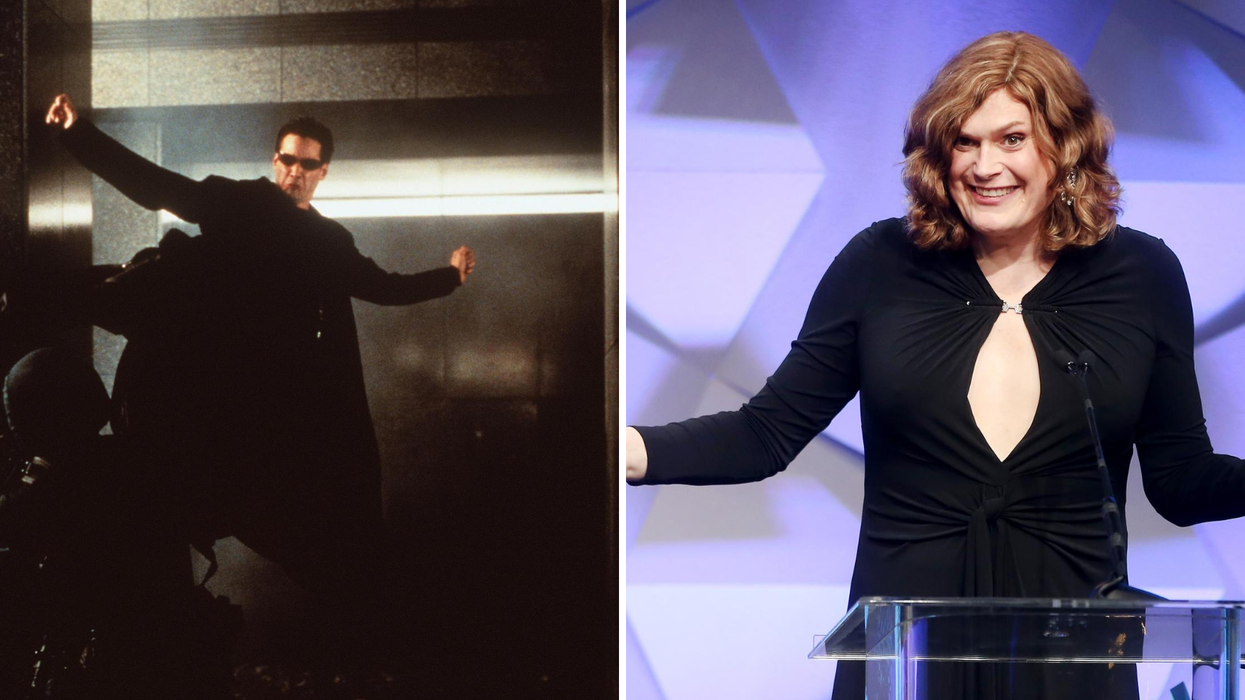In 1999, directors Lana and Lilly Wachowski introduced the world to their groundbreaking sci-fi epic The Matrix which posed the question “what if we live in a virtual reality simulation controlled by machines?”
It was a broad question but dig a little deeper and there was a more personal and important message being presented to audiences about identity and the lives of transgender people.
In 2020, Lilly, who, along with her sister, transitioned after the original Matrix trilogy was released, spoke to Netflix and welcomed the fact that fans had begun to discuss the film as a trans allegory and added that back in the late 90s the corporate film world was not ready to explore the idea in such a big mainstream blockbuster.
Wachowski looked back at the film and said that The Matrix was fundamentally about transformation, saying that trans people have told her that the movies saved their life. She added, “The Matrix was about a desire for transformation, but it was coming from a closeted point of view.”
Sign up to our new free Indy100 weekly newsletter
Wachowski added: “I’m glad that it has gotten out – that was the original intention, but the corporate world wasn’t ready yet.”
Based on this confirmation, Netflix, at the time, posted a Twitter thread outlining all the ways The Matrix is actually related to the experience of being transgender.
The “splinter” in Neo’s mind? That, for many trans folks, is a lot like the experience of being socialized as a gen… https://t.co/KTkIA2RinO— NetflixFilm (@NetflixFilm) 1596738692
Andrea Long Chu, a critic and author, wrote about how trans women have claimed the Matrix as an allegory for transitioning since the movie came out, and the symbolism is pretty obvious once she points it out.
Thomas Anderson (Keanu Reeves’ character) is a hacker by night, he chooses another name (Neo) and he has a constant feeling that something in the world is slightly off.
Mister Smith, the agent in charge of trying to neutralise the threat posed by Neo, only refers to Neo by his old name – Thomas Anderson.
And then there’s the whole red pill, blue pill connection.
And then there’s the whole red pill, blue pill connection. Not only is the pill literally Neo’s gateway to seeing… https://t.co/Id7Mz8oX4I— NetflixFilm (@NetflixFilm) 1596738887
If Neo takes the red pill, he’ll see reality for what it really is. But if he takes the blue pill, he can live in complacency for a little while longer. Long Chu also points out that in the 90s, prescription oestrogen literally came in the form of a red pill.
There are other Easter eggs too – such as the character of Switch, who was originally written as a trans masculine character, who would switch to a woman when they were in The Matrix. There is also the fact that one of the first words viewers see is the word “trans” and that in the final credits, the camera zooms through a line of code between the letters M and F, literally going through the gender binary.
Call it a wild coincidence if you will, but it’s worth noting that one of the very first and last things you see on… https://t.co/LoLjmB3zVm— NetflixFilm (@NetflixFilm) 1596739117
Reeves later endorsed the allegory. Speaking to Yahoo, the actor said: “I never spoke to Lilly about that, she never conveyed that to me. I think The Matrix films are profound, and I think that allegorically, a lot of people in different versions of the film can speak to that. And for Lilly to come out and share that with us, I think is cool.”
The Matrix is a science fiction classic, yes, but it also paid tribute to the experiences of a community that is often ignored and marginalised. And on the eve of the release of the fourth film Matrix Resurrections this important message of inclusion and acceptance is more prevalent than ever.
Top 100
The Conversation (0)













